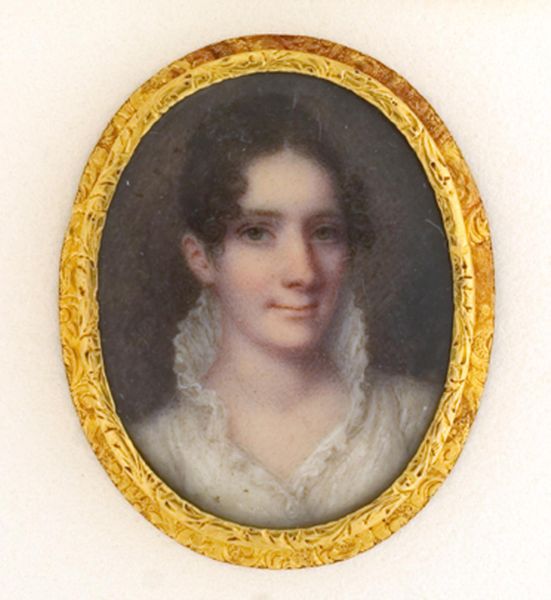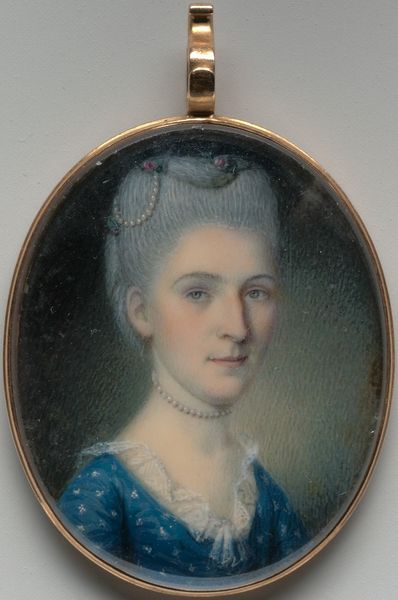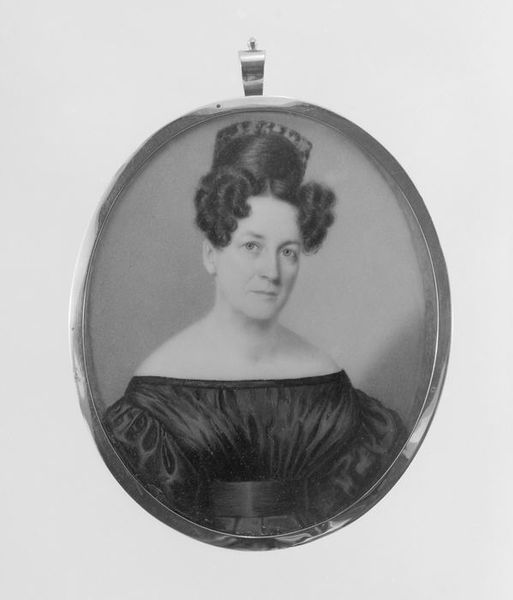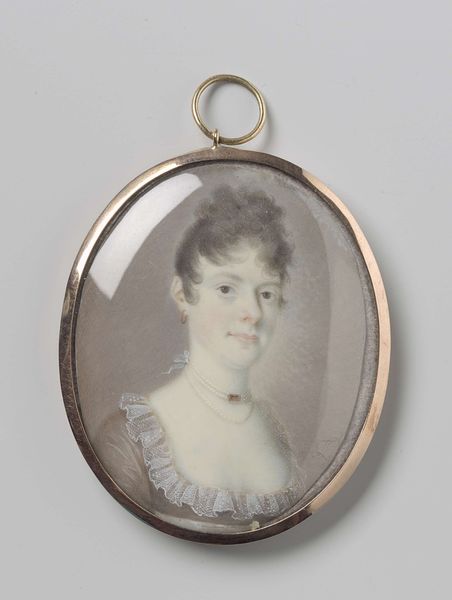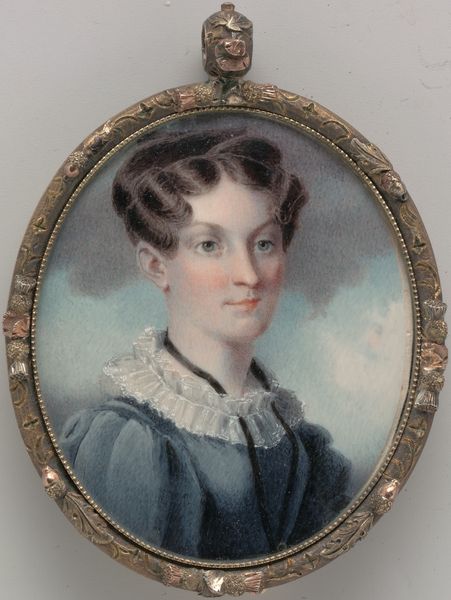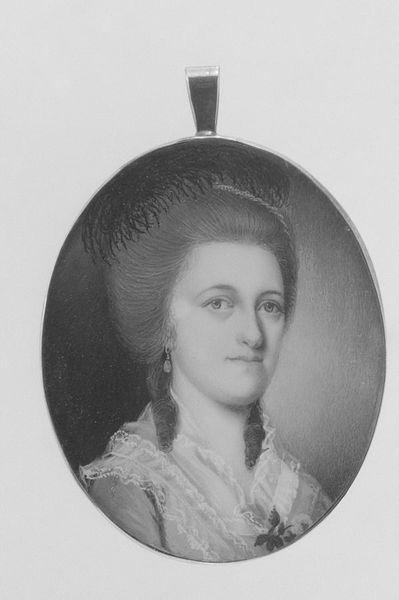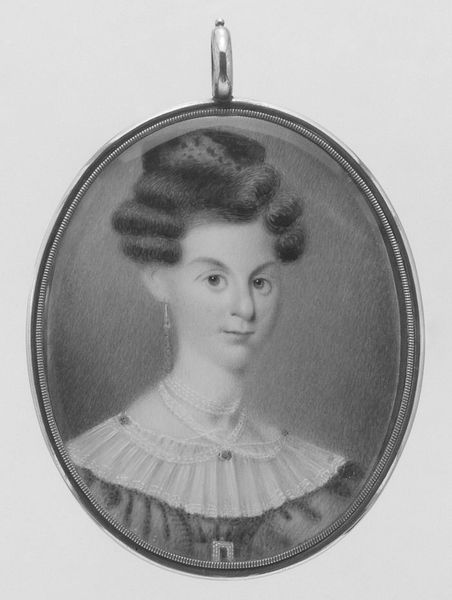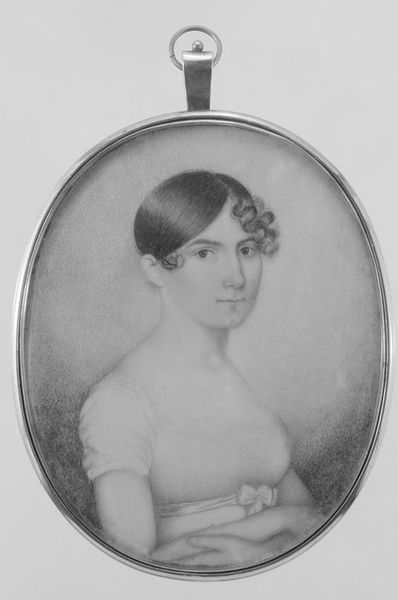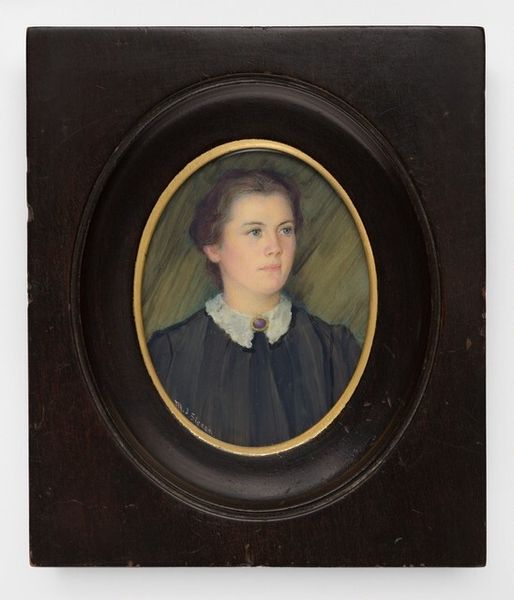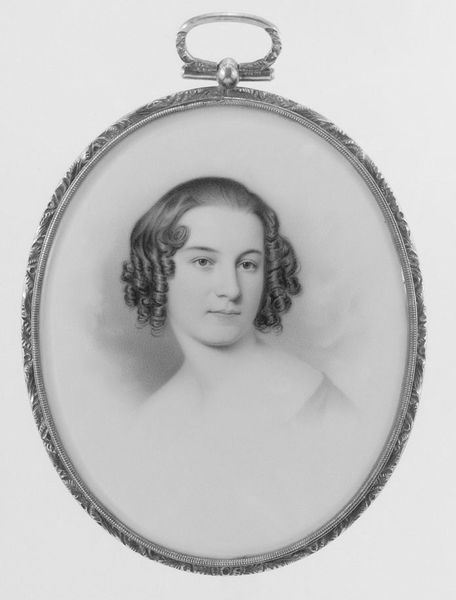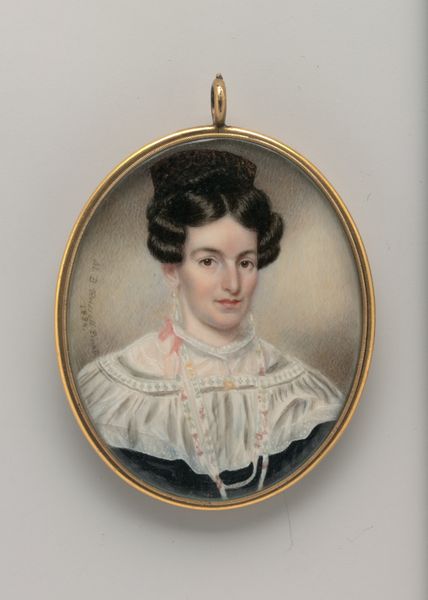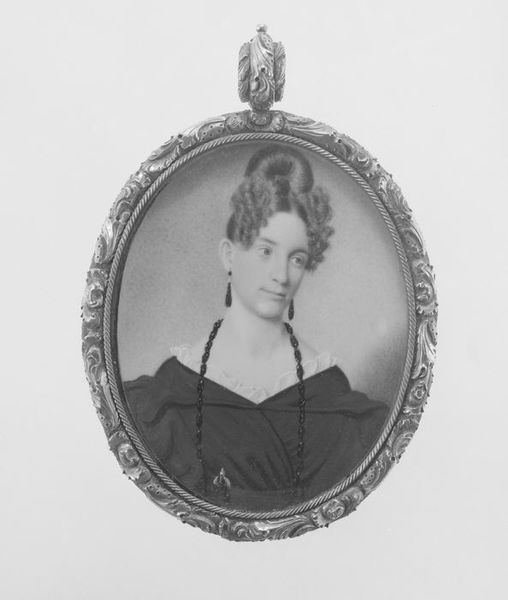
Dimensions: 1 1/2 x 1 1/8 in. (3.7 x 3 cm)
Copyright: Public Domain
Curator: This exquisite piece is a watercolor miniature portrait of Elizabeth Ann Timothy, crafted between 1772 and 1785 by Henry Benbridge. It currently resides in the Metropolitan Museum of Art. Editor: Its scale immediately suggests intimacy. The delicate application of watercolor achieves a remarkable luminescence, as if the portrait itself emits light. Curator: Precisely. Consider the formal restraint typical of the period's portraiture – the composition is contained within an oval format, intensifying the focus on Timothy’s countenance. Benbridge uses soft gradations to render her features. We see a certain confidence in her expression. Editor: That oval shape feels particularly charged given it’s then framed by the gold pendant, highlighting the portrait’s function as a deeply personal, portable object, possibly intended to be worn close to the body. This object speaks to both status and sentiment. Who made it? Where was the gold sourced? How were the materials used in its creation accessible or inaccessible, and how would those processes dictate cost? Curator: Such factors influenced the production and dissemination of these objects. Benbridge, known for his skill, probably benefited from workshop practices. The watercolor, as a medium, lends itself to replication, thus making portraits more accessible. Also consider, beyond material realities, the visual language employed – the subject's direct gaze creates a connection that transcends time. It evokes classical ideas of beauty through a refined aesthetic. Editor: And in looking beyond the sitter’s gaze, consider that this accessible rendering speaks of her own access—a reflection on how material availability also influenced subject matter, reinforcing existing hierarchies and dictating who and what was worthy of artistic capture. It all ties back to materials. Curator: Certainly, the socio-economic dimensions cannot be divorced from art history. Ultimately, the image prompts us to consider the delicate dance between artistic form, personal identity, and material history. Editor: Exactly. Each choice reflects and perpetuates ideas around personhood, labor, and power in that period. That’s quite something, contained in a miniature.
Comments
No comments
Be the first to comment and join the conversation on the ultimate creative platform.
